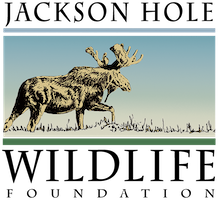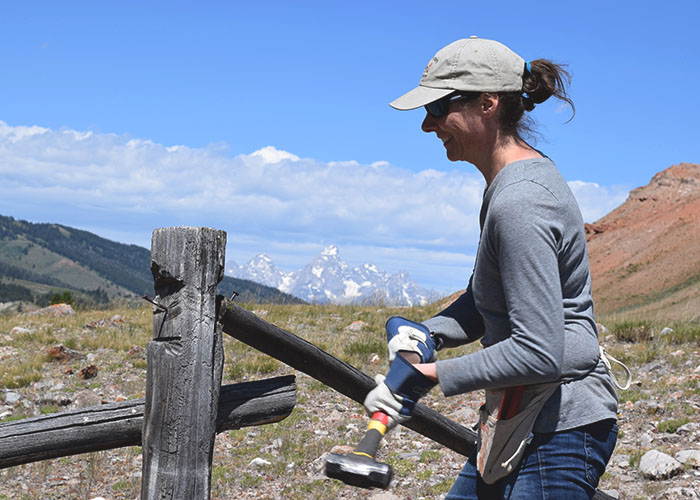
by jhwildlife | Jul 8, 2016 | Blog, Wildlife Friendlier Landscapes

Join Us for Our August 6th Fence Project:
On August 6th, we are returning to the Gros Ventre to Crystal Creek, to remove more than one mile of barbed wire fence on Bridger Teton National Forest land. The project is average in difficulty (6 on a 1-10 scale), with most of the work on rolling terrain after a moderate hike up to the fence line. Please join us!
We will meet at three car pool sites:
- Home Ranch Parking Lot (north side) at 8:00 a.m.
- Gros Ventre junction at 8:15 a.m.
- Kelly Warm Springs at 8:30 a.m.
We will carpool from these sites to project. We plan to work from 9:00 a.m to 2:00 p.m. and half-day (morning) is welcome, as well.
We will provide water and snacks. Please bring your own water bottle or hydration packs. We will provide water and Gatorade to fill your bottles, and some granola bars for a snack. Additionally we will take a mid-day lunch break. Please bring your lunch.
You should wear layered clothes, long pants, sturdy shoes and bring a rain jacket in case of storms. Sun or eyeglasses are a MUST for working with barbed wire. Sun protection (hat & sunscreen lotion) is also recommended, and will hopefully be necessary! We also recommend that volunteers check the status of their tetanus shots, in case of scratches from the old fencing material. We will provide work gloves, tools, and detailed instructions.
Please RSVP to jhwffencepull@gmail.com if you plan to attend and let us know at which meet-up point you will join us (1 of 3 locations listed above). You can also send questions to this same email address.
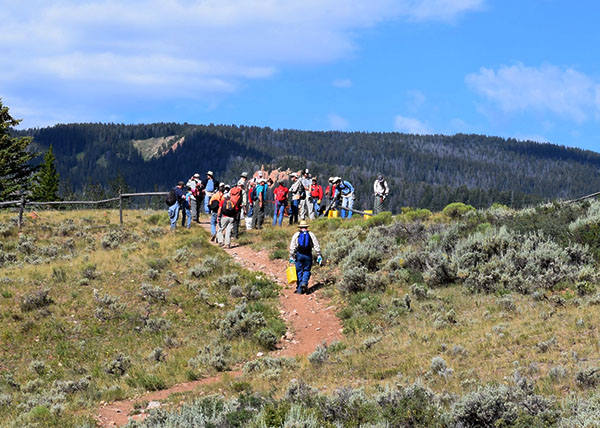
30 Volunteers removed 1 mile of barbed wire at Crystal Creek on July 16th.
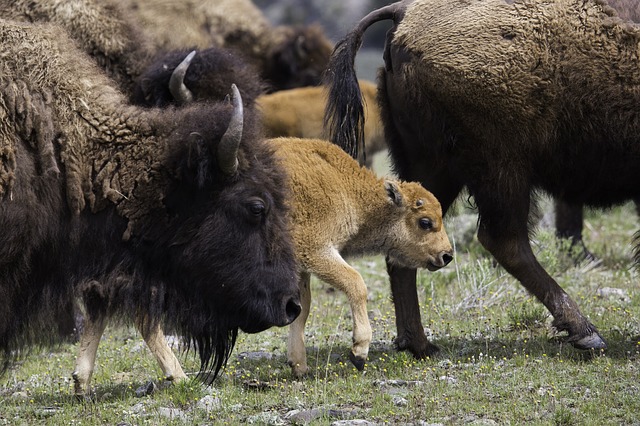
by jhwildlife | Jun 10, 2016 | Blog, Nature Mapping Jackson Hole

Bison Chronicles
By Ben Wise
With recent media coverage of bison populations in the Greater Yellowstone Ecosystem (i.e. Montana bison reduction program, bison calf abductions in Yellowstone National Park and the recent adoption of bison as the National Mammal), it seemed fitting to review the origin of the bison population in Jackson Hole. Bison are native to Jackson Hole but had been extirpated by as early as 1884 when homesteaders arrived in the Jackson Valley. The last remaining bison population in the western United States occurred in Yellowstone National Park and by 1902 numbered only 23 individuals.
In 1948, Laurance S. Rockefeller’s Jackson Hole Preserve cooperated with the New York Zoological Society and Wyoming Game and Fish Commission to establish a fenced wildlife park near present day Moran. The Jackson Hole Wildlife Park served to attract visitors to the Jackson Hole National Monument (now Grand Teton National Park), as well as serving as a scientific research center and a place where visitors could easily view wildlife. The creation of the Wildlife Park was quite controversial and led to the resignation of renowned Olaus Murie from the board of the Jackson Hole Preserve.
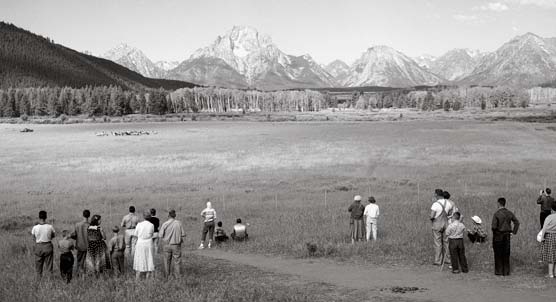
Jackson Hole Wildlife Park photo credit: Grand Teton National Park
Shortly after the Jackson Hole Wildlife Park’s creation, 20 bison were relocated from Yellowstone National Park to fenced enclosures within the park. Management of the Park was primarily the responsibility of the Wyoming Game and Fish Commission until the expansion of Grand Teton National Park in 1950. At that time, management of the Park began shifting to the National Park Service. Throughout the 1960s, management actions were coordinated with the Wyoming Game and Fish Department and included winter-feeding, capturing bison that escaped (which occurred several times annually), and routine brucellosis testing and vaccination. Herd size varied from 15-30 until 1963 when brucellosis was documented in the herd. Thirteen adults were removed from the herd, leaving just four yearlings. The yearlings, which had been vaccinated, were retained, along with five new calves that were also vaccinated.
In 1964, 12 certified brucellosis-free adults (six males and six females) were obtained from Theodore Roosevelt National Park in North Dakota, bringing the total number to 21. By 1968, the population had declined to 11 adults (all testing negative for brucellosis) and four or five calves. Later that year, the entire herd escaped the confines of the Wildlife Park. Efforts to recapture the bison were unsuccessful and the decision was made to let the herd roam free.
From 1969-1976 the population averaged 14 animals. The bison wintered within Grand Teton National Park until 1975, when they moved to the National Elk Refuge. By 1980, bison were taking advantage of the supplemental feed intended for elk. The bison readily adapted to the situation, as they had no trouble displacing elk from the feedlines, and subsequently, the population started to grow rapidly. The population peaked at approximately 1,200 animals before a hunt was established on the Refuge in 2008. Currently, the population is estimated at 666 animals. The objective for the population is 500. Refuge personnel have provided separate feedlines for bison on the northern end of the Refuge near McBride since 1984 to minimize conflicts between bison and elk. Jackson bison winter primarily on the National Elk Refuge and summer almost entirely within the boundary of Grand Teton National Park.
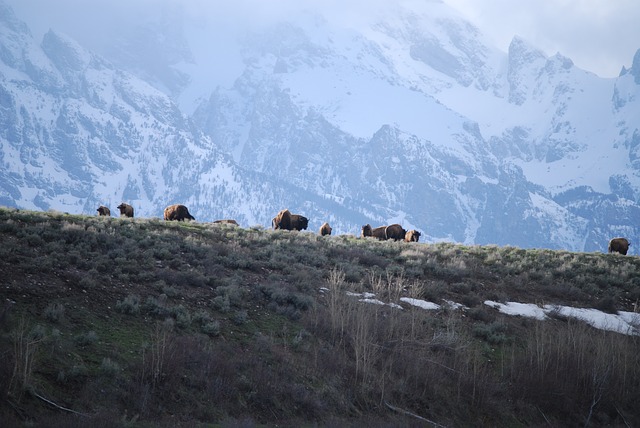
About Ben Wise:
Ben Wise is a member of Nature Mapping Jackson Hole Scientific Advisory Committee and is the Brucellosis-Feedground-Habitat Biologist with the Wyoming Game and Fish Department.
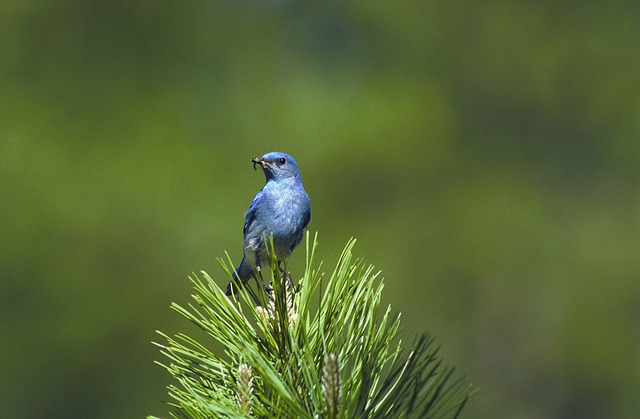
by jhwildlife | Jun 8, 2016 | Blog, Nature Mapping Jackson Hole
As a follow-up to last week’s blog post, unfortunately we have sad news to report. The nest with the five bluebird chicks seems to have been sabotaged and no observable signs exist of the chicks or their parents. Upon arriving at this particular nest box for weekly inspection, the top lid was haphazardly lying on the ground about a foot away; its screws that held it firmly in place were stripped from the wood and only just hanging on by wire. Scratch marks can be seen around the entrance hole. We can’t know for sure what happened, but we suspect we have a weasel hunting our mountain bluebird trail as other nature mappers have reported similar scenarios.
All we can do is remain vigilant to identify the predator and then devise an appropriate solution. It is a reminder to us of the nature of nature, and the circle of life in birth, survival and death — how all in nature are independent and interconnected. However, such involvement as ours through citizen science (while sometimes strongly tugging at our heartstrings) ultimately, still connects us with relevant, meaningful, and real experiences with science.

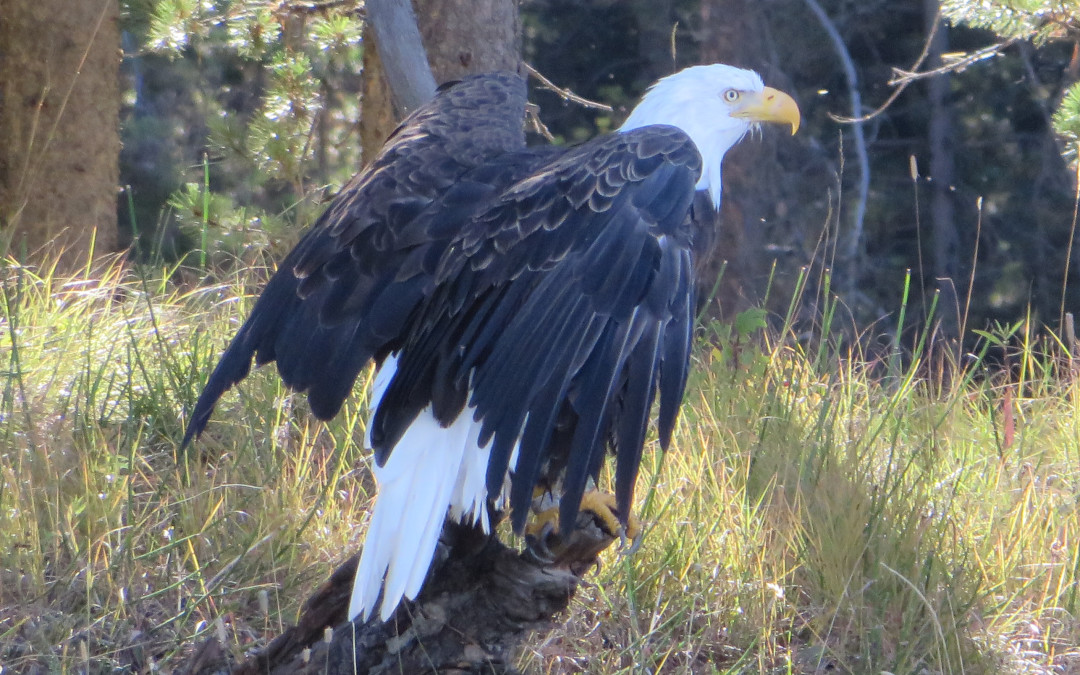
by jhwildlife | May 11, 2016 | Blog, Nature Mapping Jackson Hole
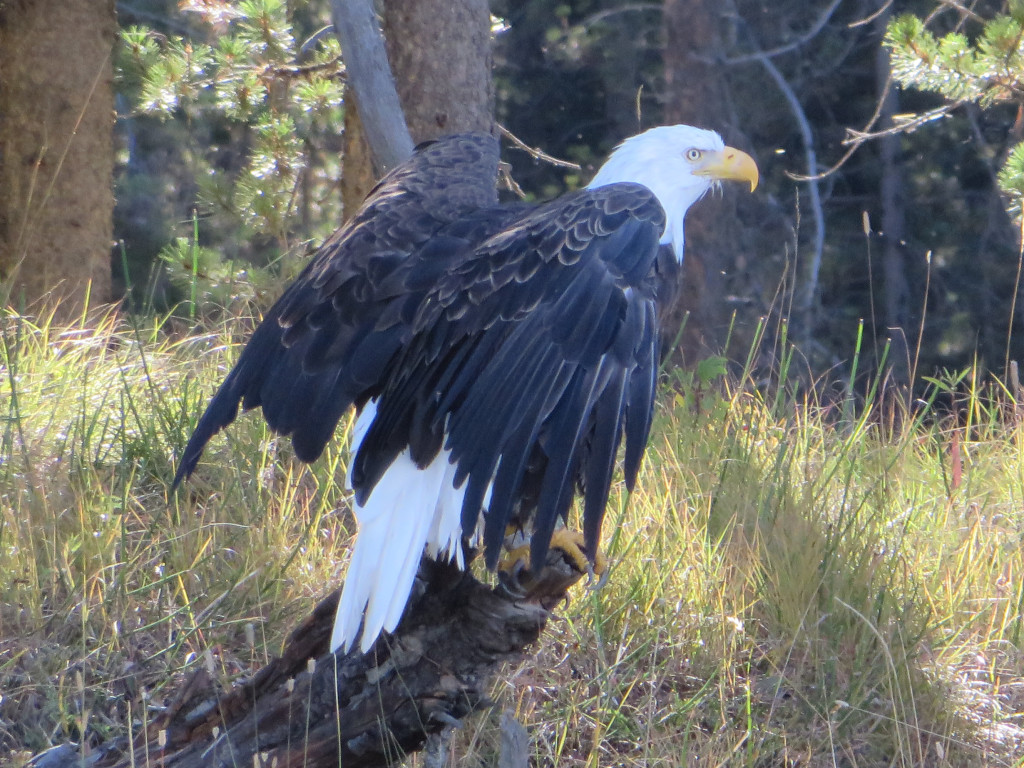
How can you see 458 birds and wildlife in three hours on a Sunday morning in one of the most beautiful locations in the nation without taking a single step? Four words–Snake River Float Trips! This little-known benefit of being a certified nature mapper is in full swing and you can take advantage of it through September.
Generously provided by AJ DeRosa’s Wooden Boat Tours, this adventurous form of citizen science is not all fun and games. Its purpose is to gain a better idea of what species of mammals, birds, and amphibians use the section of river between Wilson Bridge and South Park, which flows mostly through private land where wildlife professionals do not conduct a systematic census.
How do I Sign Up?
Sign up for one of the dates below with the volunteer director of the trips, Tim Griffith at timgrif396@gmail.com. At least one person in your party (max 6) must be a certified JH Nature Mapper and should be the main wildlife spotter and at least one person to be the recorder. The spotter should have at least a basic understanding of the birds and mammals one might see on the Snake River. It costs only $20 to cover the shuttle fees and you’re welcome to tip the guide, if desired.
May 8th Float Trip Report:
The May 8th Snake River Float Trip traveled 8 miles down the river from Rendevous Park to Wooden Boat Adventures River Camp with Kevin Coughlin, Josh Seibel, Carrie Ann Adams, and trip leader (and retired wildlife biologist) Tim Griffith. They mapped 42 species (listed below) with a highlight of spotting 12 bald eagles as there are six nests along this stretch of river and each nest has two adults associated with it.
- Canada Goose 123
- Mallard 49
- Green-winged Teal 5
- Barrow’s Goldeneye 3
- Common Merganser 31
- Double-crested Cormorant 6
- American White Pelican 5
- Great Blue Heron 7
- Turkey Vulture 1
- Osprey 2
- Cooper’s Hawk 1
- Bald Eagle 12
- Red-tailed Hawk 3
- Killdeer 10
- Spotted Sandpiper 28
- Mourning Dove 1
- Belted Kingfisher 4
- Downy Woodpecker 1
- Hairy Woodpecker 1
- Northern Flicker 4
- Black-billed Magpie 2
- Common Raven 12
- Tree Swallow 43
- Bank Swallow 9
- Barn Swallow 4
- Black-capped Chickadee 6
- Mountain Chickadee 1
- Brown Creeper 2
- House Wren 2
- American Dipper 2
- Ruby-crowned Kinglet 2
- Mountain Bluebird 2
- American Robin 19
- European Starling 1
- Yellow Warbler 2
- Chipping Sparrow 2
- Dark-Eyed Junco 2
- Song Sparrow 22
- Green-tailed Towhee 1
- Red-winged Blackbird 2
- Western Meadowlark 1
- Brewer’s Blackbird 12
- Yellow-bellied Marmot 7
- Elk 1
2016 Snake River Float Trips:
MAY: 1st, 8th, 15th, 22nd and 29th
JUNE: 12th and 26th
JULY: 10th and 24th
AUGUST: 7th and 21st
SEPTEMBER: 4th, 11th, 18th and 25th
Photo credit: STEVE MORRISS
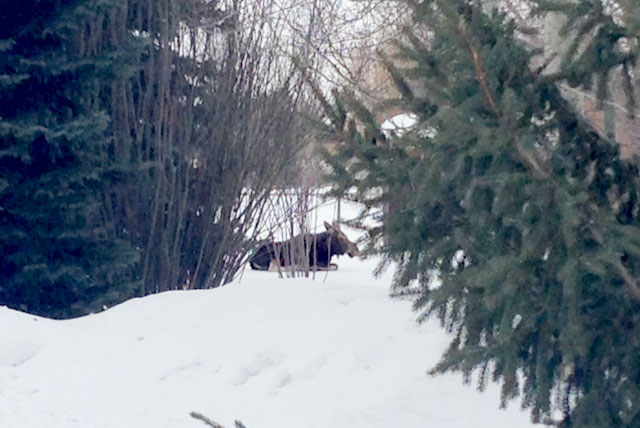
by jhwildlife | Feb 29, 2016 | Blog

Photo by Nature Mapper Kathy McCurdy on Moose Day
Eighth Annual Moose Day Survey Yields Data Similar to 2015
The eighth annual Moose Day Jackson Hole survey was conducted on Saturday, February 27, 2016 from 7:00 a.m. to 1:00 p.m. in collaboration with the Wyoming Game and Fish Department. 73 volunteers from trained Nature Mapping Citizen Scientists, Wyoming Game and Fish Department and Bridger-Teton National Forest personnel took part spending an estimated 223 hours of volunteer time. 99 individual moose were observed in 58 individual search areas.
“Moose Day is such a fun event, bringing people together around the joy of searching for wildlife,” said Jackson Hole Wildlife Foundation Executive Director Jon Mobeck. “It also serves a scientific purpose. The observation data captured on or near participating private ranch lands and residential neighborhoods supplements population surveys conducted by Wyoming Game and Fish, giving us well-rounded information in order to protect moose in the valley.”
During last year’s survey 97 individual moose were observed by 71 volunteers in 61 individual search areas. Moose numbers via this survey remain flat over the past three years.
“Moose Day is truly a community-wide effort: with 73 volunteers searching for moose by ski, foot, car, and snowmobile on a Saturday morning. We have a good time looking, enjoy swapping moose stories, and above all know we are doing something for the moose we all care about. I thank the volunteers and the landowners who are all part of this Citizen Science inventory,” said Frances Clark, coordinator of Moose Day and volunteer coordinator of Nature Mapping Jackson Hole.



